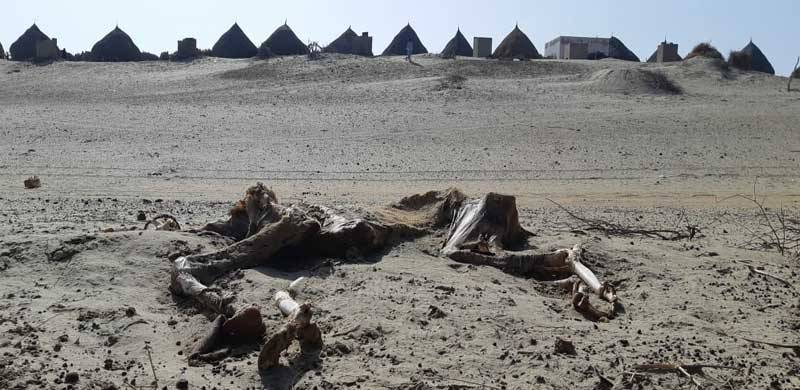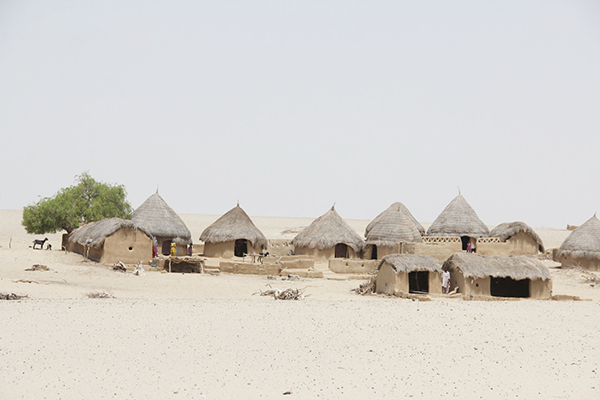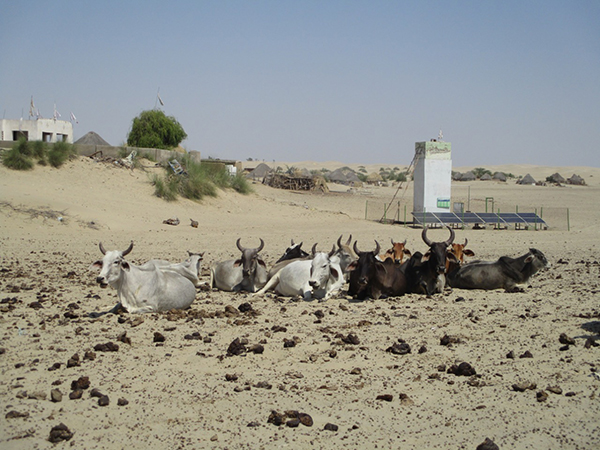
Sindh’s Achro Thar desert is facing a severe drought. Three-year long drought has affected socio-economic fiber of the area. Population of Achro Thar is scattered. Most populous part is Sanghar district’s Khipro Taluka with 50,000 persons and around 2 million livestock.
Achro Thar inhabitants depend heavily on rain, groundwater and livestock. Only timely and sufficient rains help cultivation of grass used for animal fodder. There is no vegetation in the area. Rains are also responsible for groundwater recharge used for drinking and domestic purposes. It is a famine-like situation.
https://www.youtube.com/watch?v=zEQYifLoKZU
But lack of rainfall during last three years has caused acute water shortage affecting humans and animals in the desert. There is shortage of food and fodder in the area. Stocks have vanished. There is no new grass growing in the area due to water paucity.
Prolonged drought is also effecting groundwater quality adversely. With the passage of time water has become more brackish, so much so that it has become unfit for consumption.

Groundwater in some areas of Achro Thar is found with total dissolved solids (TDS) level up to 4,500 milligrams per liter. Dissolved solids refer to any minerals, salts, metals dissolved in water. World Health Organization suggests that if water contains TDS level greater than 1200 mg/litre it becomes unacceptable for consumption.
There is massive loss of livestock animals including goats and sheep. Locals also complain that due to fodder shortage and outbreaks animals have become weak. They say that droughts in recent years have become frequent and severe.

In search of food, fodder and water, inhabitants, along with their livestock, have moved to Sanghar and other areas which have river water access called barrage areas. This is their traditional way to cope with droughts. During their stay in the barrage areas they would find agriculture related temporary laboru jobs.
But during last monsoon there was sharp drop in rainfall all over Pakistan. Sindh was the most affected area of the country. There was massive agriculture loss in Sindh due to water scarcity. There were back-to-back low yields crops of wheat, cotton and sugarcane in Sanghar. In most of the areas, growers had no choice but to sell their standing crops to the Achro Thar inhabitants so that they could use it as animals’ fodder.
Achro Thar inhabitants depend heavily on rain, groundwater and livestock. Only timely and sufficient rains help cultivation of grass used for animal fodder. There is no vegetation in the area. Rains are also responsible for groundwater recharge used for drinking and domestic purposes. It is a famine-like situation.
https://www.youtube.com/watch?v=zEQYifLoKZU
But lack of rainfall during last three years has caused acute water shortage affecting humans and animals in the desert. There is shortage of food and fodder in the area. Stocks have vanished. There is no new grass growing in the area due to water paucity.
Prolonged drought is also effecting groundwater quality adversely. With the passage of time water has become more brackish, so much so that it has become unfit for consumption.

Source: Roads & Kingdoms
Groundwater in some areas of Achro Thar is found with total dissolved solids (TDS) level up to 4,500 milligrams per liter. Dissolved solids refer to any minerals, salts, metals dissolved in water. World Health Organization suggests that if water contains TDS level greater than 1200 mg/litre it becomes unacceptable for consumption.
There is massive loss of livestock animals including goats and sheep. Locals also complain that due to fodder shortage and outbreaks animals have become weak. They say that droughts in recent years have become frequent and severe.

Source: Hamariweb
In search of food, fodder and water, inhabitants, along with their livestock, have moved to Sanghar and other areas which have river water access called barrage areas. This is their traditional way to cope with droughts. During their stay in the barrage areas they would find agriculture related temporary laboru jobs.
But during last monsoon there was sharp drop in rainfall all over Pakistan. Sindh was the most affected area of the country. There was massive agriculture loss in Sindh due to water scarcity. There were back-to-back low yields crops of wheat, cotton and sugarcane in Sanghar. In most of the areas, growers had no choice but to sell their standing crops to the Achro Thar inhabitants so that they could use it as animals’ fodder.
